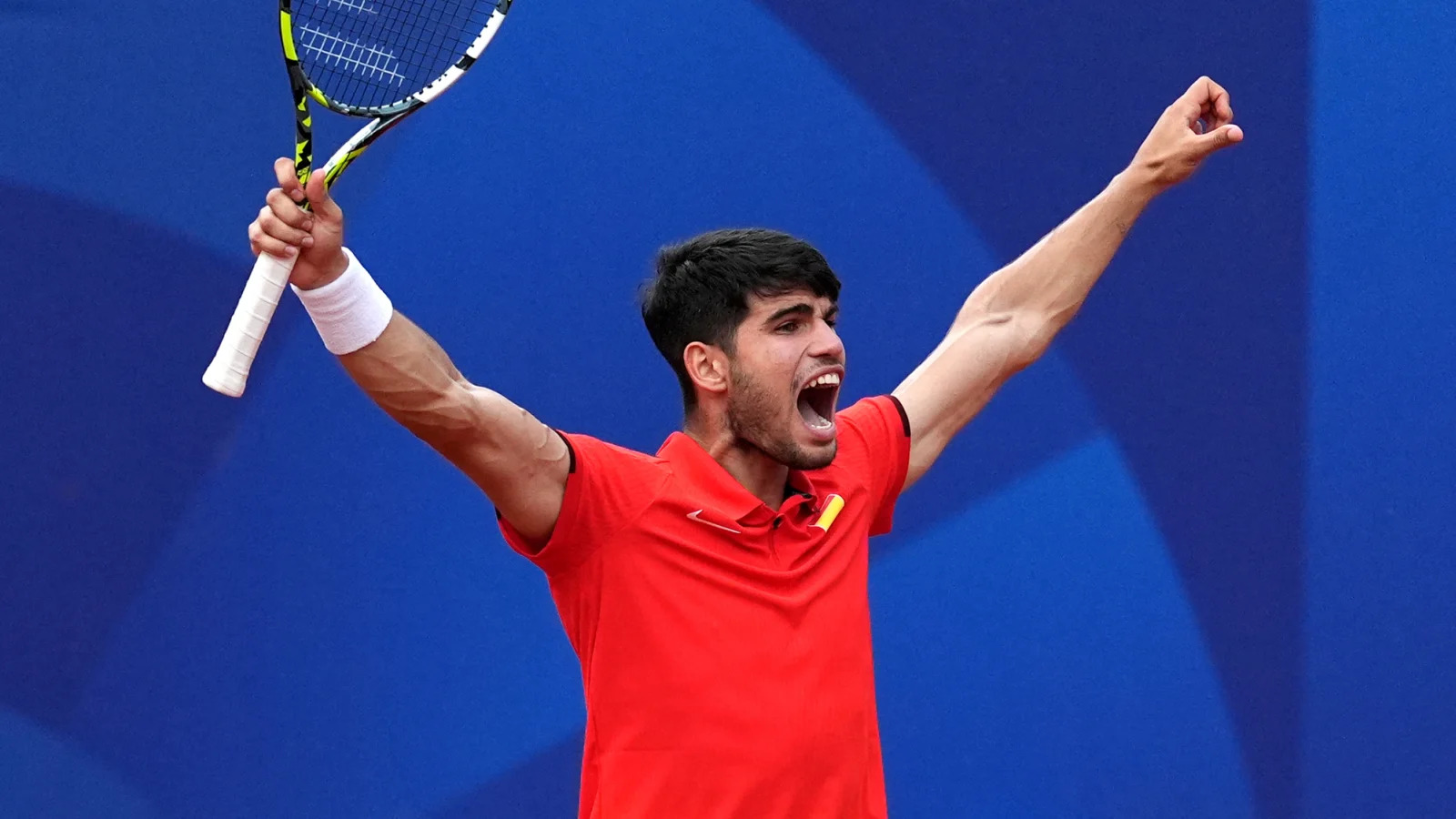
Carlos Alcaraz, the Spanish prodigy who has taken the tennis world by storm, continues to captivate fans and pundits alike with his remarkable talent and resilience. At just 21 years old, the young star has already achieved feats many players spend their entire careers chasing. Yet, even the most gifted athletes have areas for improvement, and tennis analyst and former doubles champion Rennae Stubbs has pointed out two crucial aspects where Alcaraz could enhance his game to dominate even further on hard courts. Stubbs’ advice? Take inspiration from none other than the great Roger Federer.
Alcaraz has already demonstrated his ability to excel on multiple surfaces. His clay-court dominance is reminiscent of Rafael Nadal, while his grass-court victory at Wimbledon over Novak Djokovic solidified his versatility. However, Stubbs believes there is untapped potential in his hard-court game, where the margins are often the thinnest. With hard courts being the most prevalent surface on the ATP Tour and hosting two of the four Grand Slams, mastering this surface is vital for sustained success.
According to Stubbs, the two areas Alcaraz needs to focus on are his serve and point construction. While his natural athleticism and explosive groundstrokes have carried him far, Stubbs argues that refining these specific aspects could make him nearly unbeatable. Her advice to look at Federer’s approach is rooted in the Swiss legend’s ability to adapt, innovate, and excel across all surfaces.
Improving the Serve
The serve is a critical weapon on hard courts, where the speed and lower bounce can favor players with a strong first delivery. Alcaraz’s serve, while effective, lacks the consistent placement and variety that Federer was known for. Federer’s ability to mix up his serves—combining power with precision, spin, and unpredictable placement—was a hallmark of his dominance on hard courts. Stubbs suggests that Alcaraz could benefit from studying Federer’s technique, especially his ability to disguise serves and keep opponents guessing.
Alcaraz’s serve stats reveal room for growth. While his first-serve percentage and speed are respectable, he sometimes struggles with second-serve consistency, particularly under pressure. Improving his second serve, both in terms of spin and placement, could help him win more free points and avoid giving opponents opportunities to attack. A more reliable serve would also allow him to dictate play early in rallies, a crucial advantage on fast surfaces.
Mastering Point Construction
Another area Stubbs highlighted is point construction, which becomes especially important on hard courts. Unlike clay, where long rallies are common, or grass, where quick points are the norm, hard courts require a balance of patience and aggression. Federer’s genius lay in his ability to construct points with precision, using his variety of shots to open up the court and finish points efficiently.
Alcaraz is already a master at using his powerful forehand and quick footwork to dictate play, but Stubbs believes he could benefit from incorporating more variety into his game. Federer often employed slices, drop shots, and sharp angles to disrupt his opponents’ rhythm, a tactic Alcaraz has used but could refine further. By adding more subtlety to his game and learning when to vary pace and spin, Alcaraz could keep opponents off balance and create more opportunities to finish points on his terms.
Learning from Federer’s Hard-Court Mastery
Federer’s success on hard courts wasn’t just about his technical skills—it was also about his tactical intelligence and adaptability. Stubbs emphasizes that Alcaraz should study how Federer managed his energy during matches, particularly in long tournaments like the Australian Open and US Open. Federer was a master of playing efficiently, minimizing unnecessary physical exertion, and conserving energy for the critical moments of matches.
Alcaraz’s all-out playing style, while thrilling, can sometimes lead to fatigue, especially in grueling five-set matches. Learning to balance aggression with efficiency, as Federer did, could help Alcaraz sustain his high level throughout tournaments and seasons. Managing his schedule and recovery, another area where Federer excelled, could also be crucial as Alcaraz navigates the demands of the tour.
Alcaraz’s Rapid Ascent and Future Potential
Despite these areas for improvement, Alcaraz’s achievements at such a young age are extraordinary. He has already won multiple ATP titles, including two Grand Slams, and has dethroned some of the game’s greatest players in high-stakes matches. His fearless approach, combined with his athleticism and shot-making ability, has drawn comparisons to legends like Nadal and Djokovic.
However, as the competition intensifies with the rise of players like Jannik Sinner, Holger Rune, and established stars such as Daniil Medvedev and Stefanos Tsitsipas, Alcaraz will need to continue evolving his game. Hard courts, being the surface where most tour-level matches are played, present the greatest opportunity for Alcaraz to assert his dominance further.
A Path to Greatness
Alcaraz’s willingness to learn and adapt will be critical in this next phase of his career. His openness to feedback and his desire to improve have already set him apart as a generational talent. Taking a page from Federer’s playbook—focusing on variety, precision, and tactical intelligence—could elevate his hard-court game to unparalleled heights.
As the 2025 season approaches, the tennis world eagerly awaits Alcaraz’s continued evolution. With his natural gifts, unrelenting work ethic, and the right adjustments, he is poised to leave an indelible mark on the sport. If he can master the lessons Stubbs outlined and channel Federer’s approach, Carlos Alcaraz may not just dominate hard courts but become one of the greatest players the game has ever seen.
Leave a Reply